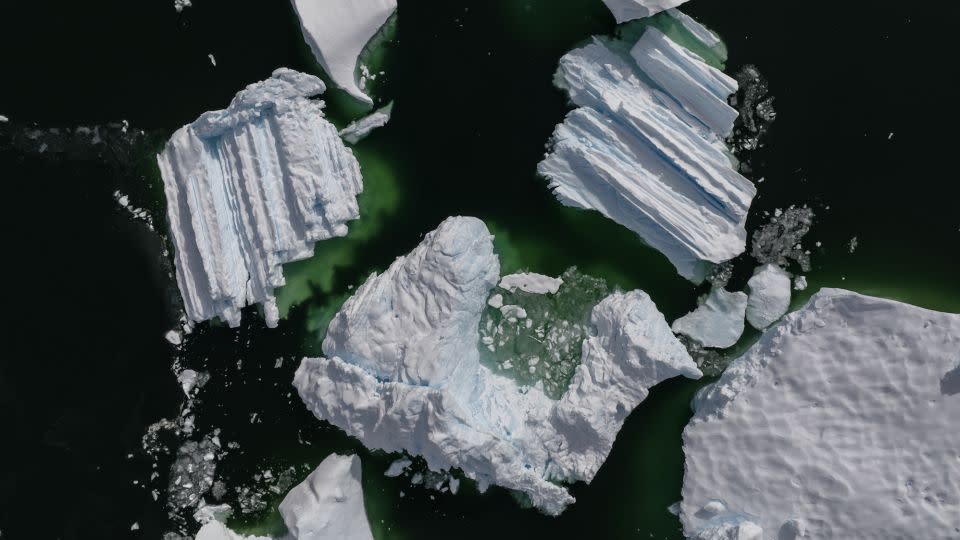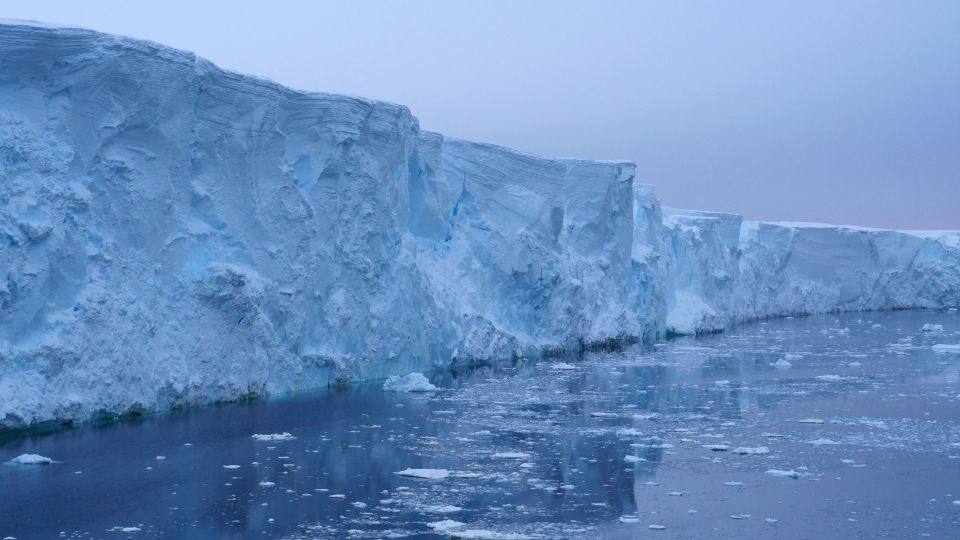The Antarctic ice sheet is melting in a new, alarming way that scientific models used to predict future sea-level rise have not taken into account, suggesting that current projections may be significantly underestimating the problem, according to a new study.
Scientists from the British Antarctic Survey have found that warm ocean water is seeping under the ice sheet at its “grounding line” – the point where the ice rises from the sea floor and begins to float – causing accelerated melting that could lead to a tipping point , according to the report published Tuesday in the journal Nature Geoscience.
A tipping point refers to the threshold at which a series of small changes accumulate that push the system beyond the point of no return.
Melting works like this: relatively warm ocean water opens up voids in the ice, allowing more water to seep in, leading to more melting and the formation of larger voids, and so on.
A small increase in ocean temperatures could have a very large impact on the amount of melting, the study found. As climate change warms the oceans, the process is accelerating.
“You get this kind of unexpected feedback,” said Alex Bradley, an ice dynamics researcher at BAS and lead author of the paper. It behaves like a tipping point, he told CNN, “where you can have a very sudden change in how much melting is going on in these places.”
That tipping point would be manifested by a faster flow of ice into the oceans, a process not currently included in models of future sea-level rise, Bradley said, suggesting that “our sea-level rise projections may be significantly undervalued,” he added.
The effects won’t be felt immediately, according to the study, but will see higher sea-level rise building up over tens and hundreds of years, threatening coastal communities around the world.
The study did not give a time frame for when the tipping point might be reached, nor did it provide figures for how much sea level rise could be expected. But the region is hugely important: the Antarctic ice sheet already sheds an average of 150 billion metric tons of ice each year and, in total, contains enough water to raise global sea levels by about 190 feet (about 58 meters).
The study is not the first to point out Antarctica’s vulnerability to the climate crisis. A number of studies point to the vulnerability of West Antarctica in particular, especially the Thwaites Glacier, known as the Doomsday Glacier because of the catastrophic impact it could have on sea level rise.
But what surprised Bradley in this study, which uses climate modeling to understand how this melting mechanism might affect the entire ice sheet, is that some of the most vulnerable glaciers are those in East Antarctica.

Eric Rigno, a professor of Earth system science at the University of California, Irvine, who was not involved in the research, told CNN that the study “encourages us to take a closer look at the physical processes occurring in grounding zones.”
“But this is a very complex, poorly observed region, and much more research and field observations are needed,” he cautioned, including establishing what processes control the intrusion of ocean water beneath the ice and exactly how that affects ice melting.
Recent research from West Antarctica found that melting at the base of the glaciers was actually lower than expected because it was suppressed by a layer of colder, fresher water – although scientists still found rapid retreat.
Ted Scambos, a glaciologist at the University of Colorado Boulder, said the new model developed by BAS scientists is “potentially very important” but must be considered alongside more recent discoveries, including mechanisms of ice melting, as well as tides you have to pump seawater under the ice.
Bradley hopes the study will prompt more research into which regions may be most at risk and give further impetus to policies to address the climate crisis. “With every little increase in ocean temperature, with every little increase in climate change, we’re getting closer to those tipping points,” he said.
For more CNN news and bulletins, create an account at CNN.com



